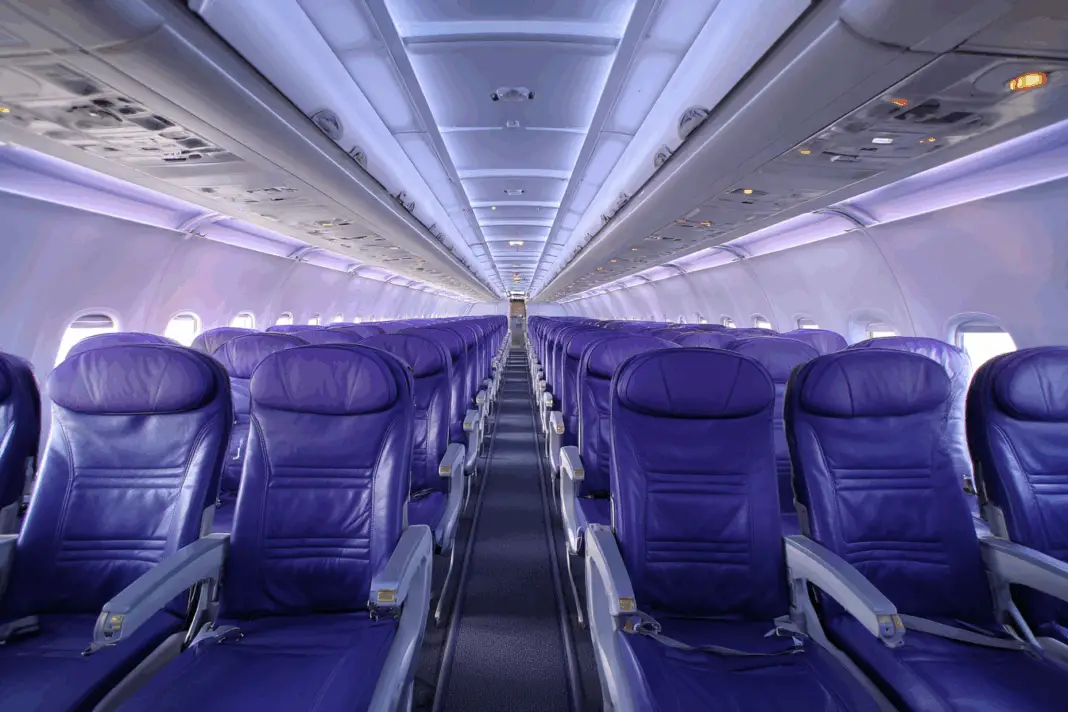Flying somewhere exciting for vacation or that important business meeting? Most travelers focus on packing the right clothes and getting to their gate on time, but they completely ignore some seriously gross habits that could ruin their trip before it even begins. From contaminated storage spaces to unsanitary surfaces that never get properly cleaned, airports and airplanes are crawling with germs that most people never think twice about. These seemingly innocent behaviors might seem harmless, but they’re actually putting your health at serious risk.
Using airplane seat pockets for personal items
That convenient little pocket on the back of the seat in front of you seems like the perfect spot to stash your phone, tablet, or snacks during the flight. Most passengers automatically reach for this storage space without giving it a second thought. After all, it’s right there at eye level, easily accessible, and appears to be designed specifically for passenger convenience during the flight experience.
Here’s the disgusting truth: these pockets are never actually cleaned between flights, only emptied of obvious trash. Flight attendants have discovered everything from dirty tissues and vomit to used underwear and half-eaten food rotting inside these compartments. One crew member described finding vomit that had spilled outside the sick bag and contaminated the entire pocket area, creating a breeding ground for bacteria that the next passenger unknowingly exposes their personal belongings to.
Walking barefoot through TSA security checkpoints
Even though TSA has changed its shoe removal policy for many travelers, some people still end up walking barefoot or in socks through security areas. Summer travelers wearing sandals or flip-flops often find themselves stepping directly onto floors that thousands of other bare feet have touched that same day. The concrete surfaces in these high-traffic areas are constantly exposed to whatever people bring in on their feet from outside.
These floors are breeding grounds for fungal infections like athlete’s foot, plus bacterial nasties including staphylococcus and streptococcus that can enter through tiny cuts in your skin. Medical experts warn that walking unprotected through these areas exposes travelers to pathogens from people with questionable foot hygiene who stepped in the exact same spots. The risk is especially high for people with diabetes, compromised immune systems, or any small wounds on their feet.
Putting loose clothing in overhead compartments
Tossing your jacket, sweater, or other loose clothing items into the overhead bins alongside everyone else’s luggage seems like a natural solution to avoid wrinkles during the flight. Most passengers assume these storage areas are reasonably clean since they’re enclosed and appear to be designated specifically for passenger belongings. The practice feels harmless enough, especially when you’re trying to maximize your personal space in those cramped airline seats.
The reality is that overhead bins are rarely if ever cleaned, and items from other passengers’ bags regularly spill out onto whatever else is stored there. Flight attendants have witnessed everything from leaking toiletries to food spills contaminating other people’s belongings in these shared spaces. Your clean jacket could end up soaking up mystery liquids or touching surfaces that haven’t been sanitized in months, picking up germs that you’ll then wear against your body.
Using tray tables without cleaning them first
That fold-down tray table attached to the seat in front of you looks like the perfect surface for your laptop, food, or drinks during the flight. Most passengers simply flip it down and start using it immediately, trusting that airline cleaning crews have properly sanitized it between flights. The smooth plastic surface appears clean enough at first glance, making it seem safe for direct contact with food and personal items.
Airlines often face extremely tight turnaround times between flights, which means cleaning crews don’t always have the opportunity to properly wipe down every surface. Flight crews admit that tray tables and armrests frequently go uncleaned between flights, potentially harboring germs from previous passengers who may have eaten messy foods, changed diapers, or worse on these surfaces. The smart move is packing disinfectant wipes in your carry-on and cleaning these areas yourself before use.
Resting your head directly on airplane surfaces
Long flights make it tempting to rest your head against the window, seat back, or tray table to catch some sleep during the journey. These surfaces seem stable and comfortable enough for a quick nap, especially when you’re feeling exhausted from early morning departures or lengthy layovers. The proximity of these surfaces to your seat makes them appear like natural options for getting more comfortable during extended travel times.
Research shows that nearly one in five travelers admit to resting their heads on tray tables, which are among the germiest surfaces on the entire aircraft. Studies reveal that 70% of travelers engage in unhygienic flying habits, with head-resting being a major offender that puts your face and hair in direct contact with contaminated surfaces. Consider bringing a travel pillow or at least placing a clean cloth between your head and any airplane surface to create a barrier against the germs left behind by previous passengers.
Using airplane bathrooms without proper footwear
Airplane bathrooms are notoriously small and challenging to navigate, leading some passengers to slip off their shoes for better grip on the floor surfaces. Others wearing socks or going completely barefoot think they’re being more comfortable during longer flights when their feet might be swelling. The confined space and need to move around carefully can make shoes feel cumbersome and unnecessary for such a quick visit.
Those bathroom floors are exposed to everything imaginable from hundreds of passengers throughout the day, and proper cleaning between flights isn’t always possible. Travel experts report that 13% of passengers admit to using airplane toilets without shoes, exposing their feet to moisture, bacteria, and other contaminants that accumulate on these surfaces. Even if the floors look clean, they’re harboring germs that can easily be absorbed through the skin on your feet or tracked back to your seat area.
Touching surfaces without washing hands afterward
Airport and airplane surfaces get touched by thousands of people every single day, from door handles and armrests to security bins and gate seating. Most travelers automatically grab these surfaces without thinking about the germs they’re picking up, then continue touching their faces, food, or personal items throughout their journey. The constant flow of people from all over the world means these surfaces are exposed to an incredible variety of bacteria and viruses.
Dry cabin air makes your nasal passages more vulnerable to respiratory viruses, while touching contaminated surfaces and then your face creates a direct pathway for germs to enter your system. Health professionals recommend washing hands as frequently as possible during travel, especially before eating or touching your eyes, nose, or mouth. Hand sanitizer is better than nothing, but soap and water remain the gold standard for removing the variety of contaminants you’ll encounter in these high-traffic environments.
Storing food items in seat pockets or bins
Keeping snacks handy during flights makes sense, and the seat pocket or overhead bin might seem like convenient storage options for your food items. Many passengers stash granola bars, crackers, or other snacks in these spaces to free up room in their personal bags or to keep items easily accessible during the flight. The enclosed nature of these storage areas gives a false sense of cleanliness and food safety.
Former flight attendants have discovered dirty diapers and used vomit bags left in seat pockets, contaminating these spaces with bacteria that can easily transfer to your food packaging. Airline crew members strongly recommend storing all food items in sealed containers within your personal bag rather than exposing them to these unsanitized storage areas. Even wrapped foods can pick up contaminants through their packaging, which you then touch when opening your snacks and potentially transfer germs to your hands and mouth.
Storing carry-on bags in overhead bins far from your seat
Boarding the plane and immediately shoving your carry-on into the first available overhead bin might seem like smart planning. Many passengers think they’re being clever by securing storage space quickly, regardless of where their actual seat is located. This approach appears to solve the problem of limited overhead space, especially on crowded flights where every inch of storage matters.
This selfish habit creates absolute chaos during deplaning, forcing everyone to wait while passengers scramble in opposite directions to retrieve their belongings. Travelers report that this behavior turns a simple 10-minute exit process into a 20-minute nightmare of people pushing past each other in narrow aisles. The confusion and delays affect everyone on the plane, creating unnecessary stress and frustration that could easily be avoided with basic consideration for fellow passengers.
Next time you travel, think twice before engaging in these common but risky behaviors that could turn your trip into a health nightmare. Simple precautions like carrying disinfectant wipes, wearing proper shoes, and keeping your belongings in your personal bag can help protect you from the worst airport and airplane germs that most travelers never even consider.

